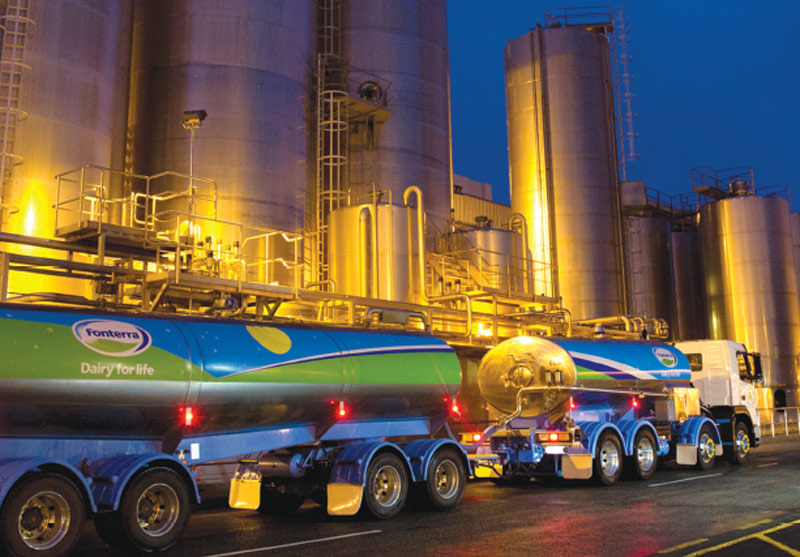Milk-based dairy products form one of the most stable and fundamental markets for various valve types, stainless steel and related accessories. Global consumption is still increasing, which impacts production capacities, depending on the region.
By James Chater
Whether for nutrition or recreation, the consumption of dairy products worldwide has been increasing, and demand is likely to continue to grow. Two market research organisations project CAGR growth of 5% for the periods 2020-2025 and 2021-2026 respectively (1).
Rising populations and higher standards of living are thought to be behind the trend, with yoghurt and cream-based desserts being among the fastest growing segments. Health considerations also play a role: for instance, lactose intolerance is especially present in the Chinese population, making lactose-free products especially popular.
Milk tanker at the Te Rapa dairy factory, Hamilton, New Zealand. Photo: Fonterra.
Cocktail
Milk, from which most non-egg dairy products derive, is a rich cocktail of vitamins, acids, mineral salts, carbohydrates, bacteria and enzymes. The huge variety of milk-derived products derives from the type and degree of various treatments, including flavouring, age, coagulation, fat content, fermentation, homogenisation, species (cow, goat, sheep, buffalo), water content and more.
In this sense, dairy processing can be said to be a microcosm of the food processing industry as a whole. It, therefore, requires equipment that is easy to clean, with a hard, smooth surface made of material that does not leach during cleaning. At the start of industrial-scale factory farming in the 1920s, stainless steel emerged as the only candidate material capable of meeting all the requirements. At one time, aluminium, copper and carbon steel were occasionally used, but the industry consensus is that only stainless steel can withstand the often aggressive conditions of a modern dairy. The move away from local markets, when the milk was harvested and transported on the same day, towards more centralised processing and distribution relying on more elaborate storage and transportation systems, was another factor favouring the use of stainless steel.
Did you know?
• The world’s largest producer of milk is India.
• The largest exporters of milk products are New Zealand, Germany and the Netherlands.
• Thirty per cent of the world’s dairy exports come from Fonterra, a co-operative owned by around 10,500 New Zealand farmers.
• Pasteurisation is named after the French scientist Louis Pasteur (1822-1895), who demonstrated that thermal processing would deactivate unwanted micro-organisms in wine.
• The word “yoghurt” is derived from Turkish “yogurt”, related to the verb “yoğurmak”, “to knead”, or “to be curdled, coagulated or thickened”.
Products and processes
Milk and cream
The first important stage in milk processing is pasteurisation, whereby it is heated for a short time and immediately cooled to kill harmful bacteria. The standard procedure is to heat the milk to 72° C for 15 seconds. A side-effect of this process is that it kills certain nutrients. To prevent this, other thermal and non-thermal processes are often used. For instance, microwave volumetric heating (MVH) delivers energy evenly and deeply into the whole body of a flowing product, allowing for gentler and shorter heating that better preserves the heat-sensitive substances. UHT (ultra-high temperature processing; heating to 135° C for 2 to 5 seconds) is used to lengthen the shelf life of milk still further (“long-life” milk).
Spinning off the cream
All these heating processes use some kind of heat exchanger. Being an emulsion (a mix of non-soluble liquids), milk has the tendency to separate into a fatty cream layer and a lower-fat milk layer; the cream layer, being lighter, floats to the top. To speed up this process, modern dairies use centrifugal cream separators to “spin off” the cream and sell it as a separate product. The separator’s spinning allows the centrifugal force to pull the heavier milk outwards against the walls of the separator and the lighter cream to collect in the middle.
High-pressure equipment

Alternatively, milk can be homogenised to avoid milk-cream separation and produce a creamier type of milk. The milk is pumped at high pressure through very narrow tubes, breaking up the fat globules through turbulence and cavitation.
Modern homogenisation processes use equipment operating under high pressures: pumps, valves, nozzles, or interaction micron chambers made from abrasion-resistant ceramics or hard gemstones.
Further processing can produce other dairy foods. Butter is produced by agitating or churning cream, rupturing certain membranes that prevent fat in the milk from forming a mass. Churning separates the cream into butter and buttermilk, and after the buttermilk is drained off the remaining butter is kneaded to form a water-in-fat emulsion that is solid and smooth.
Alternatively, milk can be bacterially fermented to produce yoghurt. The milk is heated to about 85° C to prevent the proteins from forming curds, and is allowed to cool to about 45° C. The bacterial culture is mixed in, and the mixture is maintained at a warm temperature until fermen-tation has occurred and lactic acid results.
Cheese
“How can one rule a country that has 365 kinds of cheese?”, President de Gaulle famously quipped. World government would prove much more difficult, as the number of different cheeses is estimated in the thousands. In fact, these different types of cheese are produced according to a bewildering variety of flavors, coagulations and textures. The process is most commonly started out by using bacteria to convert milk sugars to lactic acid (as with yoghurt). Some processes rely solely on acidity to achieve curdling, whereas others also use rennet (set of enzymes from the stomachs of ruminant mammals); the rennet serves to make the cheese softer and fresher. For the harder cheeses, the curd is cut into small cubes to drain the water and heated. The exact temperature (which can range between 35–55° C) helps to determine the cheese’s taste. Salt is added, not just for the flavor but for preservation and to firm the texture. Other processes – stretching, cheddaring and washing – are important in determining the cheese’s taste.
Ice cream
Finally, ice cream is an important derivative of milk. The modern method of producing ice cream consists of blending milk, cream, milk solids, sugars, modifying agents and flavorings in a stainless steel vat. After pasteurisation at 82-85°C for 15 seconds, the mixture is cooled then allowed to stand for 2 to 24 hours to allow solidification. It is then frozen at about -7°C and beaten, adding air to the mix. The ice cream is then moulded, packaged and frozen to around -25°C.
Tubes
In dairy-grade tubes, the longitudinal internal weld bead is flattened or removed to ensure there are no bacterial traps within the tube. This level of hygiene can normally be achieved only with TIG orbital welding. This process allows certification to EN10357 “food grade” standard in addition to the EN10217-7 Euronorm standard required for all stainless steel tubes. The most commonly used surface treatment is CC Finish.
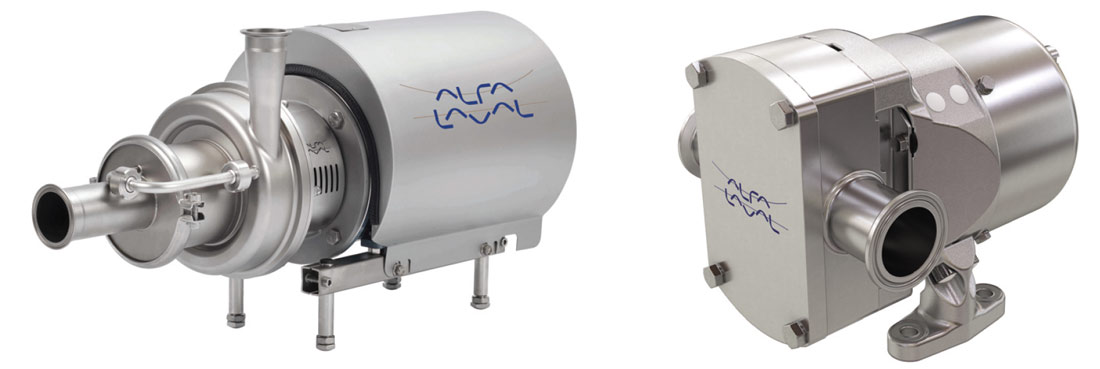
Equipment and materials
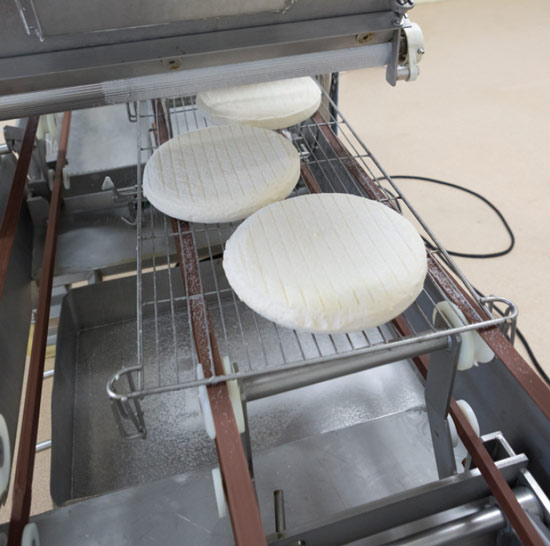
Equipment used in dairy processing includes refrigerated storage tanks, maturation tanks, churns, tubs, moulds and vats; centrifuges, pasteurisers; heat exchangers (plate, tubular and scraped-surface); filtration equipment; cheese racks; packaging machines; other equipment. The various processes also require tubing, pumps and valves. This equipment must possess product integrity (no corrosion or leaks), cleanliness, ease of cleaning and ease of inspection. The equipment must also be able to resist chemical solutions used in cleaning, such as chloride-based sterilising agents, acids and alkalis.
Pump and valve designs continue to evolve as manufacturers strive to cut back on their environmental footprint.
The most commonly used grades used in the processing of all milk-derived dairy products are austenitic types 304, 316 and 316L. (The less corrosion-resistant ferritic grade 430 can be used for the outside cladding of storage tanks and milk tankers, but parts in contact with the media require austenitic or higher.) Type 316(L) is indicated for the production of cheese or butter, because of the salt content. In some applications, such as tank construction, LDX 2101 lean duplex can replace 316L, while lean grade 2304 has proved more effec-tive than 304(L) against stress corrosion cracking in the construction of tanks. Tetra Pak has started to make its separator bowls out of two duplex grades: 2205 for the slower speed and super duplex 2507 for the faster speed.
Super austenitic grades find a role in ice cream making. The moulds are in contact with a brine (salt dissolved in water) at very low tempera-ture, around -20°C. This cooling solution has to be kept in a liquid state while the ice cream solidifies. The aggressive solution requires grades such as Ultra 254 SMO/ EN 1.4547 (2).
Perishable
Food contact valves in the food and beverage sector – including dairy – are not used for challenging applications. Temperatures and pressures are nowhere comparable to other sectors, such as petrochemicals or nuclear. The only challenging application in terms of pressure is reverse osmosis.
On the other hand, there are numerous types (aseptic, double-seat mix-proof etcetera), sizes and material compositions. The requirements for equipment and cleaning practices in dairy are more challenging than – for example – the brewery sector.
Dairy is a perishable product and the category encompasses a variety of products (sweet, sour) in different textures. Dairy is also an ideal growth platform for micro-organisms. As a result, the process configuration, equipment choice and cleaning practices are crucial.
Potential hazard
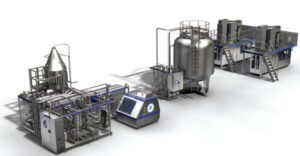
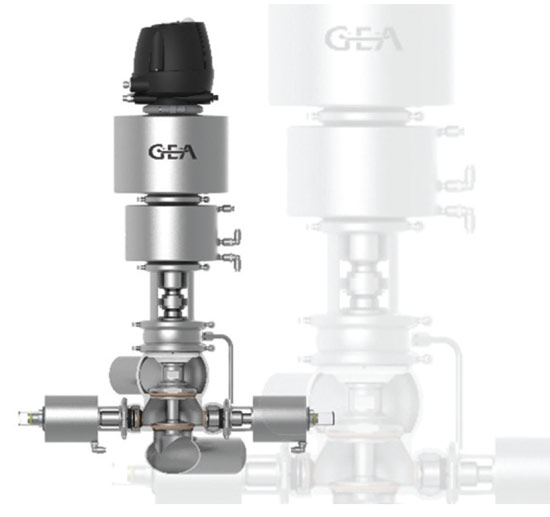
Another potential hazard is the ingress of micro-organisms from the outside. Micro-organisms can burrow in crevices and open threads and enter if the opportunity arises. Specifically for valves, micro-organisms could use the stem in control valves as an elevator to ‘travel’ into the inner mechanism of the valve. These stems can be protected as is the case with aseptic valves. The best option is to clean outer surfaces and make this a common practice.
Apart from food quality and safety issues, there are other challenges that are related to the product’s characteristics. For example, in the chocolate processing industry the raw material – sticky and viscous – can clog processing equipment in case the temperature drops. Specifically for valves, this can have a detrimental impact when a closed valve is opened, and the gasket could be torn out of the groove. A remedy can be to use a gasket-less design, replacing the gasket with metal-to-metal contact. This can be feasible as tight closure is not required given the viscosity of the medium.
The future
The adoption of new grades in the dairy industry is slow and evolutionary. Nevertheless, one change we are seeing is a reversion to milder conditions to better preserve nutritional qualities and to integrate hygienically designed systems requiring milder cleaning conditions. Another area of potential change is the modification of micro-topography or nano-topography of the surface to reduce organic fouling and microbial fouling (biofilm). Both these trends could lead to the adaption of milder grades of stainless steel.
References
1) https://www.researchandmarkets.com/reports/4534356/dairy-market-growth-trends-and-forecast-2020;
https://www.mordorintelligence.com/industry-reports/dairy-products-market
2) My thanks to Katri Saari of Outokumpu for her explanation.
3) A matter of engineering glue, article – Valve World April 2019
About this Featured Story
This Featured Story is an article from our Valve World Magazine June 2022 issue. To read other featured stories and many more articles, subscribe to our print magazine.
“Every week we share a new Featured Story with our Valve World community. Join us and let’s share your Featured Story on Valve World online and in print.”


